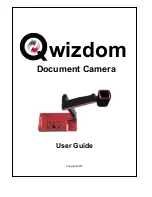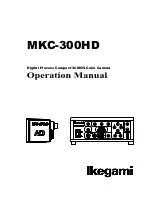
. . . . . . . . . . . . . . . . . . . . . . . . . . . . .
xii
camera as the only external device attached to a PowerBook com-
puter (refer to Chapter 4). Use only the SCSI cables supplied with the
camera to attach the camera or other peripherals to the computer. If
you use other cables, you may violate FCC emission requirements
and could corrupt data on the hard disk.
Power-Cord Protection — Route power-supply, and other cords, so
that you are not likely to walk on them or pinch them with items
placed on or against them; pay particular attention to cords at plugs,
receptacles, and the point where they leave the equipment.
Grounding — The AC battery charger/adapter is equipped with a
three-wire grounding-type plug with a third (grounding) pin. The
three-wire plug will fit into a grounding-type power outlet. This is a
safety feature. If you are unable to insert the plug into the outlet,
contact an electrician to replace the obsolete outlet. Do not defeat the
safety purpose of the grounding-type plug.
Lightning — For added protection for the equipment during a light-
ning storm, or any time when you will leave the equipment unat-
tended and unused for long periods of time, unplug the AC battery
charger/adapter from the power outlet and disconnect the camera
from the computer. This will protect the equipment from damage
caused by lightning or power-line surges.
Temperature, Humidity, Condensation — We do not recommend
operating the equipment outside the operating temperature or humid-
ity ranges as indicated in the Specifications appendix. If condensation
occurs, added time may be required to read from or write to a
PCMCIA card. Condensation may be present if the camera system
and/or PCMCIA card(s) are moved from a relatively cold environment
(like an air conditioned hotel room), into a warm, humid environ-
ment. We recommend that you allow sufficient time for the camera
system and/or PCMCIA cards to normalize within the specified
environmental ranges before operation. (Third-party, optional













































